
what you'll learn...
overview
The division in first principles was explained as splitting of dividend into divisor number of parts. In that, one part is the quotient and the part of dividend that could not be split is the remainder.
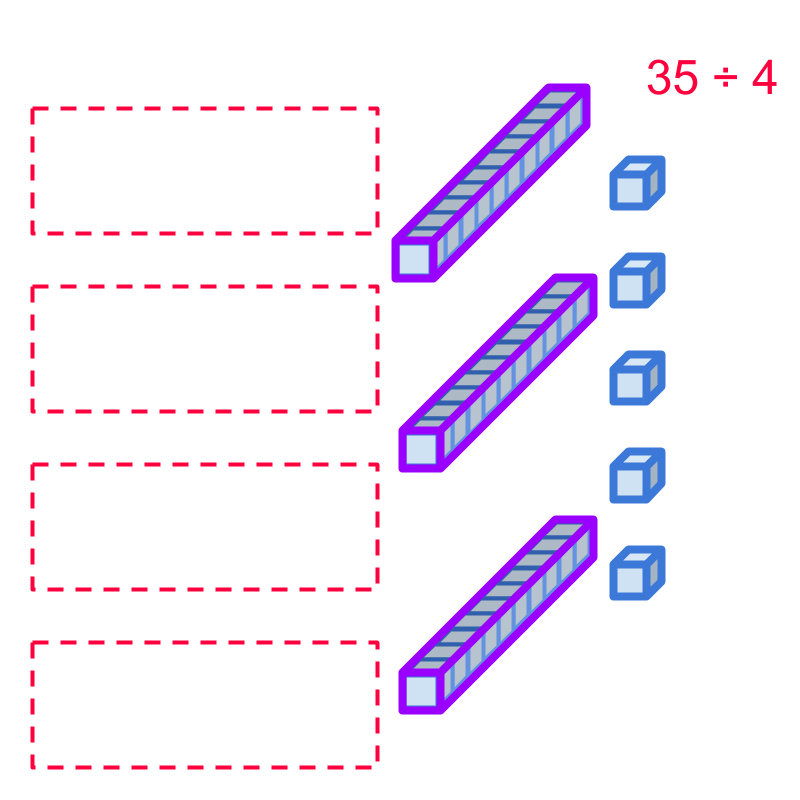 This method is revised for 2-digit numbers and established the de-grouping is required.
This method is revised for 2-digit numbers and established the de-grouping is required.
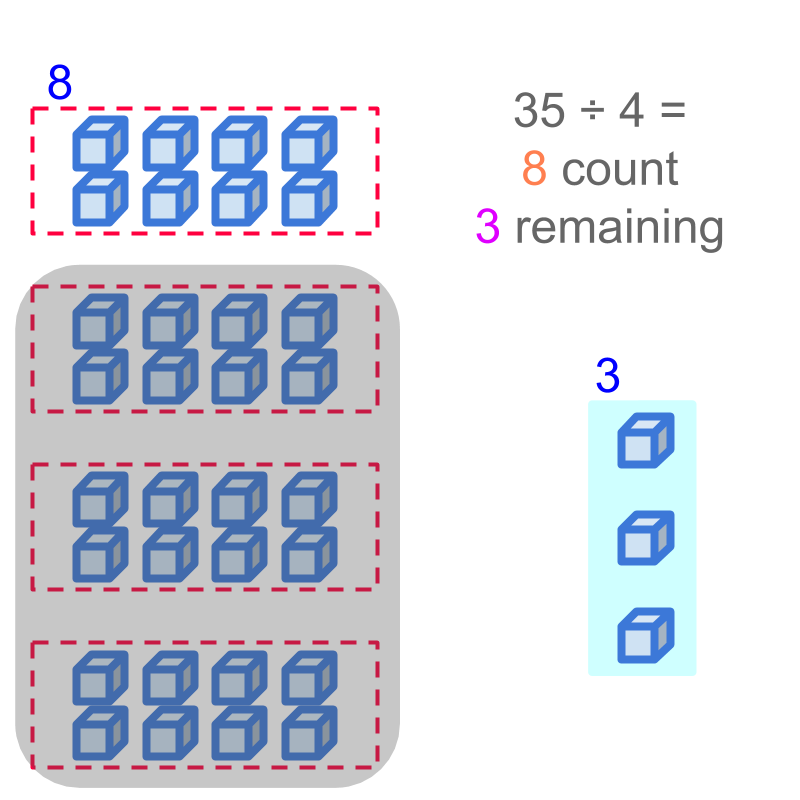 A simplified procedure for large numbers is explained.
A simplified procedure for large numbers is explained.
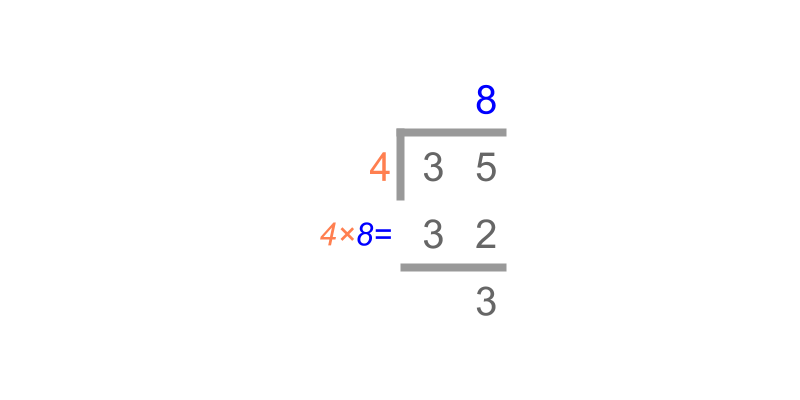
de-grouping
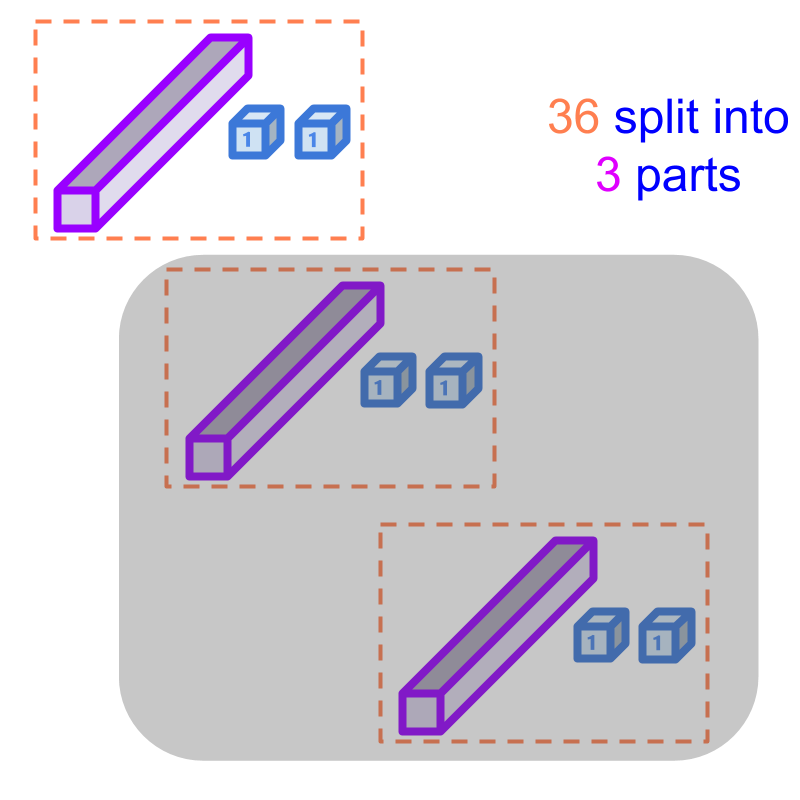
Consider the division 36÷336÷3. To perform the division, 3636 is split into 33 parts and one part is counted.
Considering the division 36÷336÷3. Splitting 3636 into 33 parts is shown in the figure. Only one part is chosen, and other parts are shaded.
There are 11 tens and 2 units which together form the value 12 in one part.
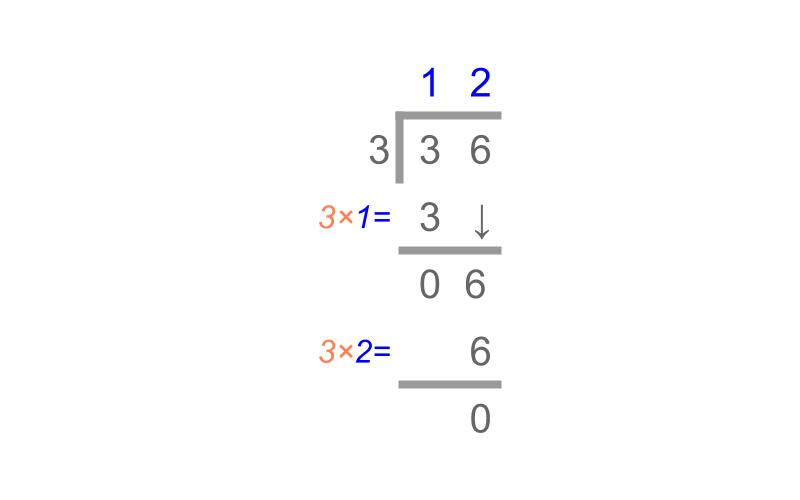
Considering the division 36÷3. The number 36 is given in the place value form in the figure. The splitting into equal parts is visualized and the division is performed as shown in the figure.
The tens place is divided first as 3÷3=1 and then the units place is divided as 6÷3=2.
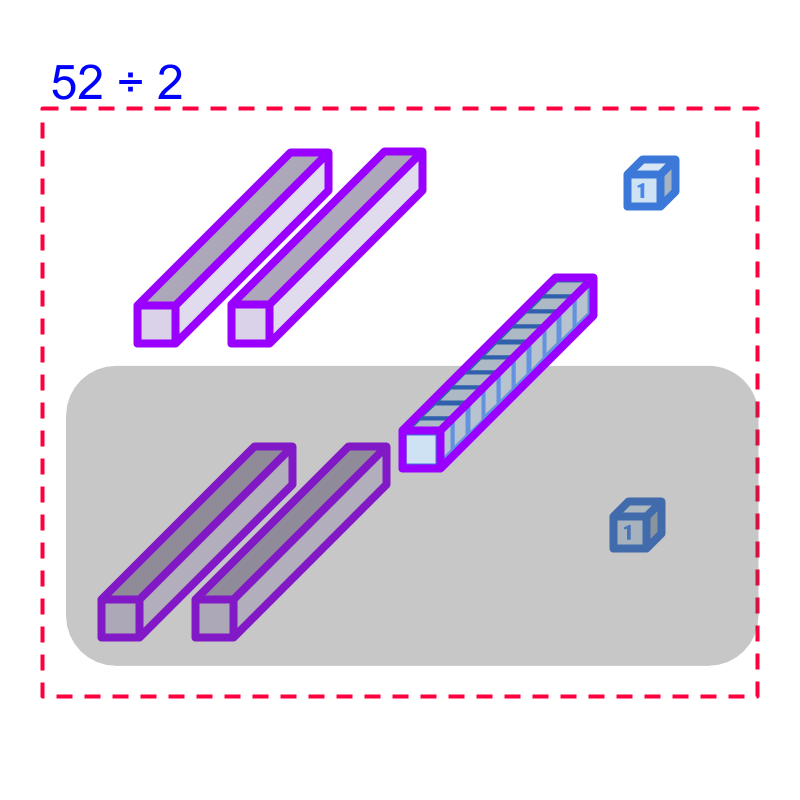
Consider the division 52÷2. That is, 52 is split into two equal parts as shown in the figure.
5 tens are distributed as 2 each in the two parts. 1 ten part remains in the dividend. The 2 units parts are distributed as 1 each in the two parts.
1 ten is equivalently 10 units and so can be distributed as 5 units each.
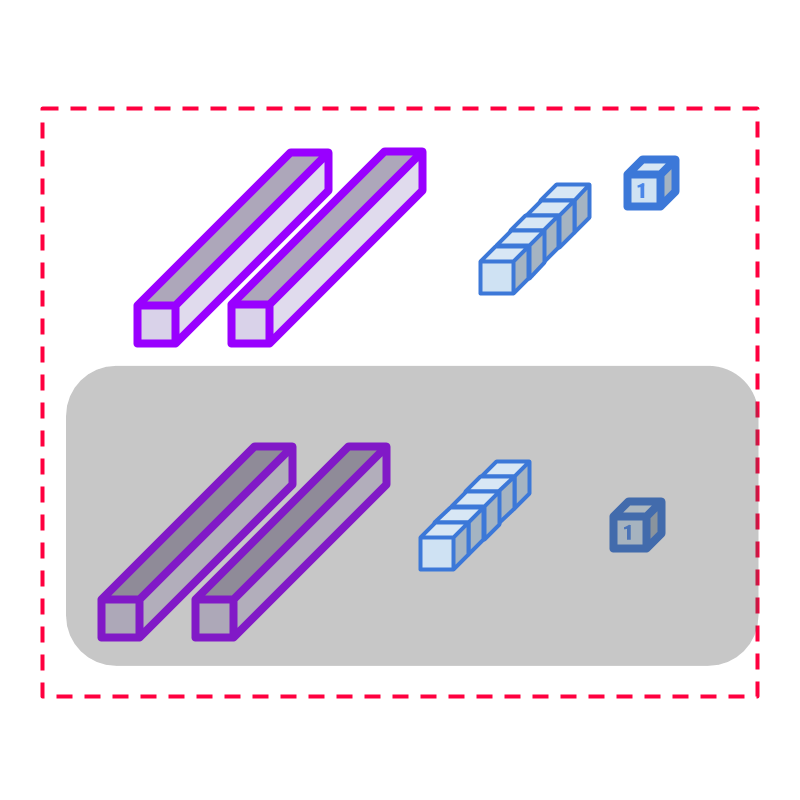
Considering the division 52÷2. That is, 52 is split into two equal parts as shown in the figure. Note that 1 ten remaining in dividend is de-grouped into 10 units and are placed 5 each. So the result of the division is 2 tens and 6 units, which is 26.

Considering the division 52÷2. The number 52 is given in the place value format in the figure.
A simplified procedure, Division by Place-value is shown in the figure.
First the tens place division, 5÷2 is considered. 2×2=4 and 1 ten remains.
The remaining 1 ten is converted to 10 units and combined with 2 units from units place of dividend. In the units place, 2×6=12 is applied. The result is 26.
simplify
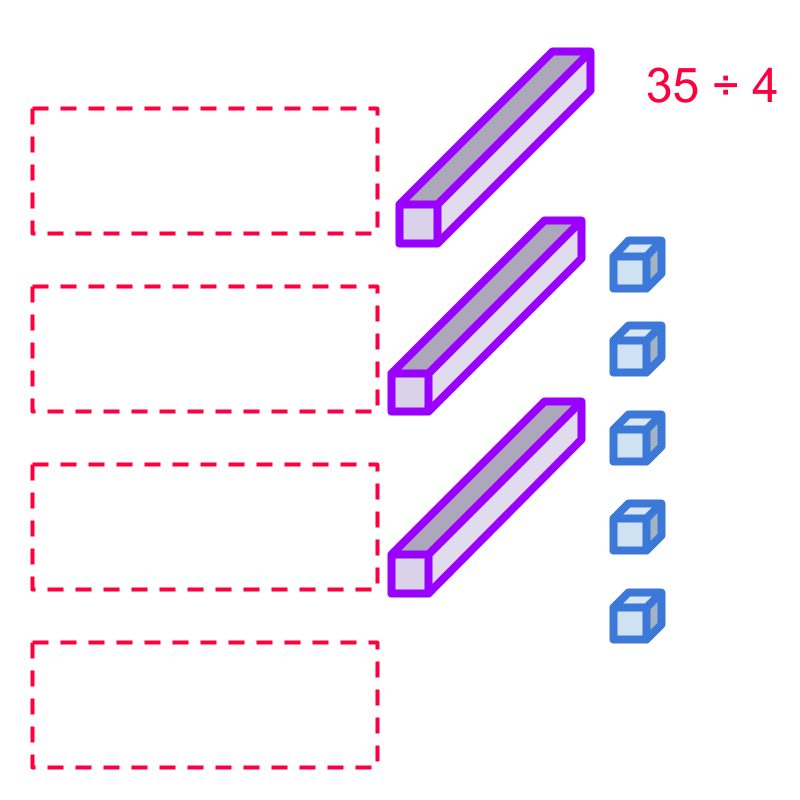
Consider the division, 35÷4. One 35 is shown in the figure.
The dividend can be either split into 4 equal parts or the simplified procedure can be used to divide in place-value form.

Considering the division: 35÷4.
The 3 tens cannot be split into 4 equal parts. So the 3 tens are de-grouped into 30 units and combined with the 5 units.

Considering the division: 35÷4. The value 35 is converted into 30 units and combined with the 5 units in the units place. Now, the units are distributed as shown in the figure.
One part makes 8 units and 3 units of dividend is remaining. The result of the division is, quotient 8 and remainder 3.

Considering the division: 35÷4. The numbers are given in place value in the figure. A simplified procedure is given in the figure. The result of the division is, quotient 8 and remainder 3.

Division by Place-value -- Simplified Procedure : A number is divided using long division method as shown in the figure.
Note: The procedure de-groups remaining tens into equivalent number of 10 units.
example
What is the quotient and remainder of 1111÷4?
The answer is "quotient 277 and remainder 3"
What is the quotient and remainder of 3001÷3?
The answer is "quotient 1000 and remainder 1"
summary
Division by Place-value -- Simplified Procedure : A number is divided using long division method as shown in the figure.
 Note: The procedure de-groups remaining tens into equivalent number of 10 units.
Note: The procedure de-groups remaining tens into equivalent number of 10 units.
Outline
The outline of material to learn whole numbers is as follows
Note: click here for detailed outline of Whole numbers
• Introduction
→ Numbers
→ Large Numbers
→ Expanded form
→ Face and place values
→ Approximation and Estimation
• Comparison
→ Comparing two numbers
→ Number line
→ Predecessor & Successor
→ Largest & Smallest
→ Ascending & Descending
• Addition Subtraction
→ Addtion: First Principles
→ Addition: Simplified Procedure
→ Subtraction: First Principles
→ Subtraction: Simplified Procedure
• Multiplication Division
→ Multiplication: First Principles
→ Multiplication: Simplified Procedure
→ Division: First Principles
→ Division: Simplified Procedure
• Numerical Expression
→ Introducing Numerical Expressions
→ Precedence
→ Sequence
→ Brackets